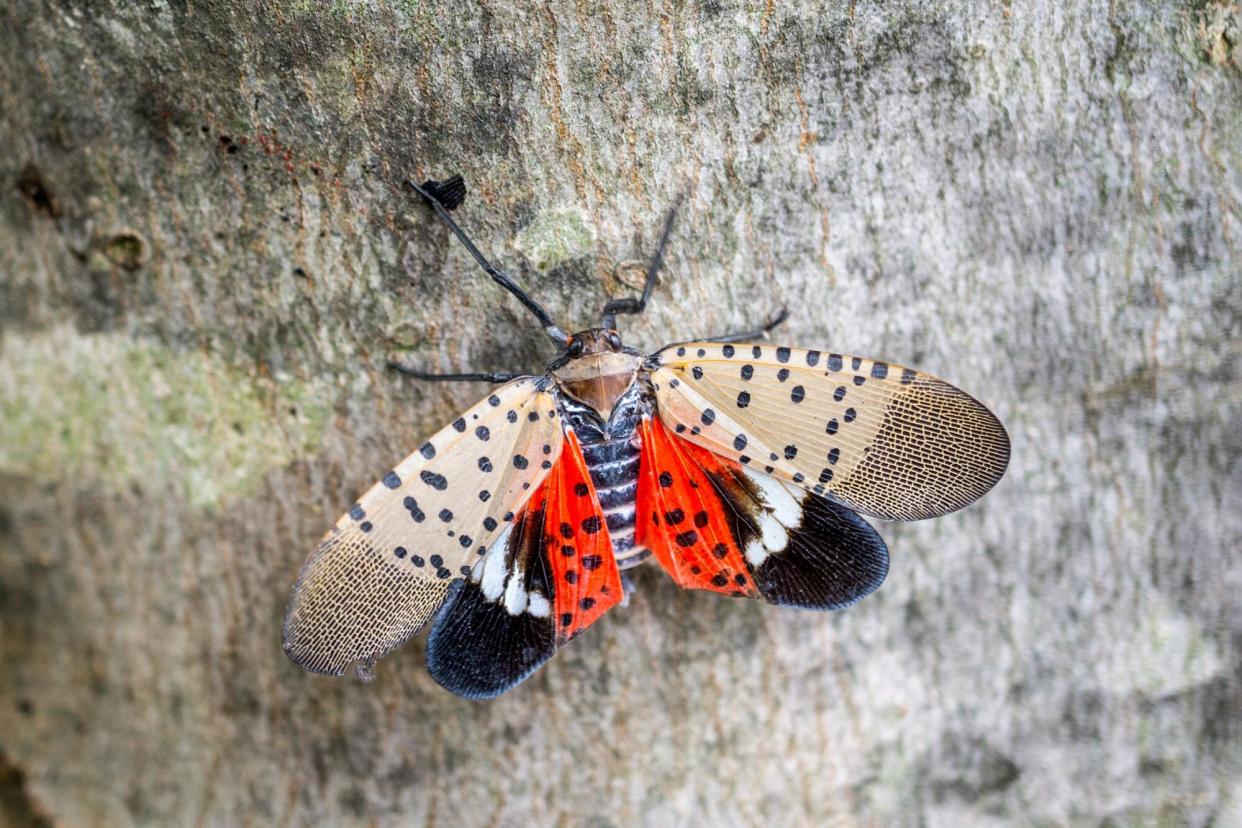Can Spotted Lanternflies Survive Fall and Winter?

GETTY IMAGES
By now you've likely heard of the spotted lanternfly—the invasive bug that has taken the northeastern United States by storm—and the massive damage the species is capable of doing to food crops like grapes, apples, peaches, maple, and walnut.
While these pests do have a few natural predators, like praying mantises, yellowjackets, and garter snakes, humans might be the best defense when it comes to eradicating these bugs before they've spread too far to be stopped. Another built-in safeguard? The natural changing of the seasons—but only if you stay vigilant.
Related: How to Rid Your Garden of 5 Common Pests
Spotted Lanternflies Can't Survive a Hard Frost
Some good news: These bugs only produce one generation per year, says Marie Horner, vice president of government affairs at Arrow Exterminators, and each of these bugs goes through three phases during their life cycle: an egg stage, a nymph stage (with four instar development stages), and an adult stage.
Eggs Live Through Winter
Based on what we currently know about spotted lanternflies, their typical egg phase lasts from October to June, with nymph stages running from late spring or early summer through July to September. At this point, they'll enter their adult stage, which lasts until approximately December—or whenever the temperatures begin to drop in your area.
"Adult spotted lanternflies can perish at the first frost, but it usually takes a couple of hard freezes to wipe them out," Horner says. Unfortunately for us, their eggs will survive through the long, cold winter and produce a new generation of lanternflies that will be ready to wreak havoc next year.
Identifying Spotted Lanternfly Eggs
While this fly species' appearance may be somewhat pleasing to the eye, thanks to dramatic wings that have different sections of delicate black polka dots and a dramatic red splash of color, their eggs are decidedly unattractive. "The egg masses resemble a splotch of mud or smear of putty on a tree trunk or any smooth, hard surface," says David Price ACE director of technical services, associate certified entomologist, Mosquito Joe, a Neighborly company.
While the egg sacks may look like a single blob, Horner says there's a lot more there than meets the eye. "Eggs are laid in masses—a single mass could hold from around 30 to 50 eggs," she says.
Killing Spotted Lanternfly Eggs
The best way of dealing with these egg masses—and the future adult flies they turn into—is manually, say Price and Horner.
Scrape Them
"To date, the main way of destroying the eggs is to scrape them off surfaces using a knife or thin plastic card into a sealed plastic bag with hand sanitizer or alcohol," Horner says. "Once this has been done, dispose of them."
Smash Them
If you don't have any alcohol on hand, Price says brute force works as well. "They also can be smashed," he says, adding that you'll need to ensure all of the eggs are destroyed before you discard them.
Spotted Lanternfly Map
Pennsylvania was the site of the original spotted lanternfly invasion, according to Horne; the first flies were identified there in September 2014.
Where Spotted Lanternflies Are Now
"Since then, they have been identified in Connecticut, Delaware, Indiana, Maryland, Massachusetts, Michigan, New Jersey, New York, North Carolina, Ohio, Rhode Island, Virginia, and West Virginia," she says.
This quick spread shows just how invasive they can be when their population isn't controlled.
Where Spotted Lanternflies Will Invade Next
Unfortunately, if you haven't seen this invasive pest yet, you won't have to wait too long. "In recent years, they have become efficient hitchhikers. They fly into open windows of vehicles or the back of trucks being loaded or attach egg masses to the inside of vehicle wheel wells," Price says. "They were reported in Iowa this year and are moving along major transportation routes going south and west from Pennsylvania."
The current expectation is that people in the Southeast will begin spotting these flies soon, says Horne. As they begin to move further south, it's likely that their lifecycles will change—especially once they take over areas where winters are mild and don't include hard frosts, making it especially important for people to remain vigilant about targeting these pests at all stages of their lifecycle.

